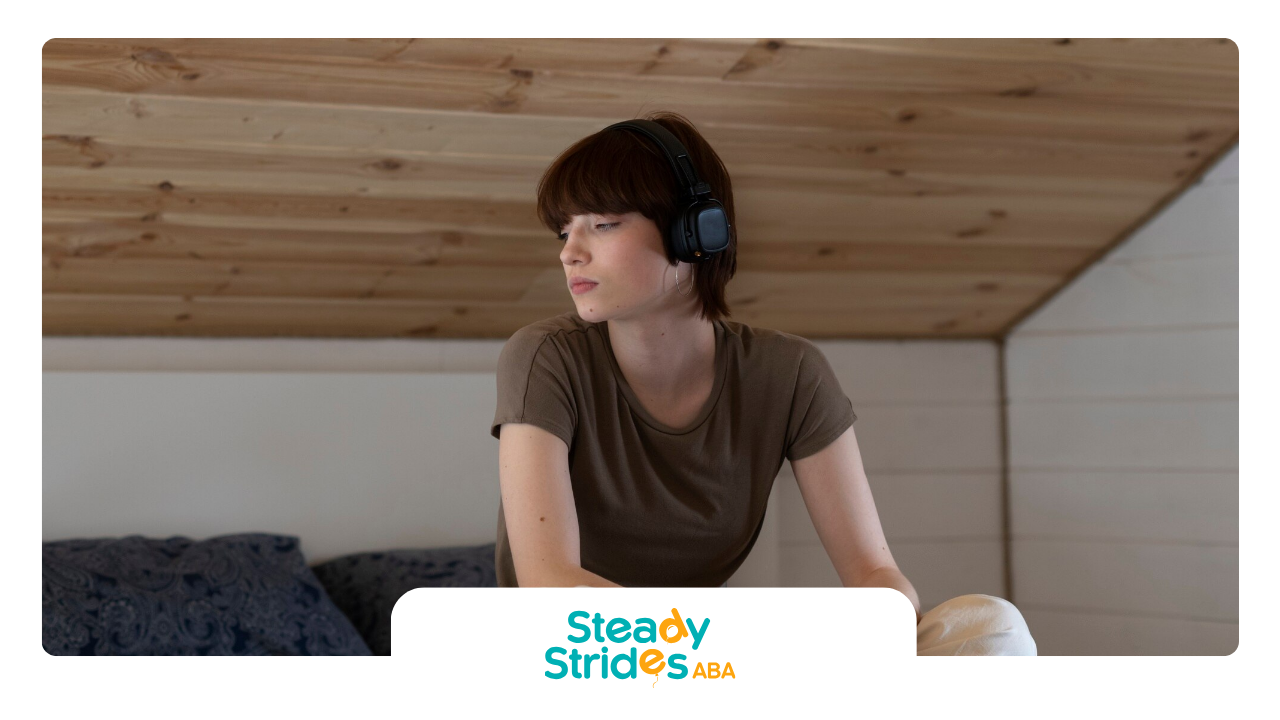The Purpose of ABA Therapy for Teens
Applied Behavior Analysis (ABA) therapy plays a crucial role in supporting the development of teens with autism. It focuses on enhancing several key areas that contribute to their overall well-being and independence.
Enhancing Social Interactions
One of the significant ABA therapy goals for teens is to improve social interactions and relationships. This facet of therapy helps teens develop essential social skills such as:
- Initiating Conversations: Enabling teens to start conversations appropriately and engage with peers.
- Interpreting Nonverbal Cues: Assisting teens in understanding body language, facial expressions, and other nonverbal forms of communication.
- Participating in Group Activities: Encouraging teens to actively take part in group settings, fostering a sense of belonging and teamwork.
By focusing on these areas, ABA therapy empowers teens to build lasting friendships and enhances their engagement in social situations. This aspect of therapy fosters meaningful connections and ensures that teens are better equipped for social integration.
Communication Skills Improvement
Another primary goal of ABA therapy for teenagers is to enhance their communication abilities. This includes both verbal and nonverbal communication methods, as well as alternative communication strategies when necessary. Some areas of focus include:
- Expressing Themselves Clearly: Helping teens articulate their thoughts and needs in a clear and effective manner.
- Understanding Others: Teaching teens to comprehend spoken language and nonverbal cues from others.
- Utilizing Alternative Communication Methods: When necessary, introducing and reinforcing the use of tools such as picture exchange communication systems (PECS) or communication devices.
By improving these communication skills, ABA therapy lays the foundation for better academic performance and social integration, enabling teens to navigate their daily lives more effectively.
For more information on various therapy options available for teenagers, visit our section on teenage autism therapy options. Additionally, learn more about specific ABA therapy techniques for adolescents which can further support their development.
Coping Strategies and Emotional Regulation
ABA therapy equips teens with coping strategies and techniques to manage stress, frustration, and anxiety, helping them with emotional regulation at home and in school. Through positive reinforcement, teens learn to replace negative behaviors with more adaptive ones, promoting emotional well-being. This section will discuss how ABA therapy aids in developing essential life skills and supports the transition to adulthood.
Developing Life Skills
ABA therapy helps teens with autism build essential life skills such as personal hygiene, time management, organization, and self-care. These skills contribute to greater independence and prepare them for adulthood. Collaboration with families and schools ensures consistency in skill acquisition across different settings.
| Life Skill | Area of Impact |
|---|---|
| Personal Hygiene | Health and Social Interactions |
| Time Management | Academic and Daily Routines |
| Organization | Task Completion and Efficiency |
| Self-Care | Independence and Self-Esteem |
Transition to Adulthood Support
As teens with autism approach adulthood, ABA therapy assists in facilitating a successful transition. Working with therapists, teens set goals, explore career interests, and develop strategies for post-secondary education or vocational training. This preparation aims to empower teens to navigate future challenges through fostering self-determination and decision-making skills.
Key areas of focus include:
- Career Exploration
- Post-Secondary Education Preparation
- Vocational Training
- Decision-Making Skills
ABA therapy for teens not only helps in managing daily living skills but also ensures a smoother transition into adulthood, equipping them with necessary coping mechanisms and emotional regulation strategies. These aspects are integral for their overall development and well-being. Please check our insights on applied behavior analysis for teenagers to learn more about ABA therapy's role in adolescent growth.
Setting Measurable Treatment Goals
ABA therapy involves developing specific treatment goals that are quantifiable and achievable to support meaningful outcomes for teens with autism. Collaboration and clear objectives are essential to ensure progress.
Collaboration for Effective Outcomes
Effective collaboration in ABA therapy is fundamental for setting and achieving measurable treatment goals. This process typically involves the expertise of a Board Certified Behavior Analyst (BCBA), who works in conjunction with caregivers and the teen.
- Initial Assessments: The process begins with an in-depth assessment of the teen's baseline skills and behaviors. This may include interviews with caregivers, direct observations, and standardized assessments.
- Setting Goals: The BCBA collaborates with caregivers to establish both long-term and short-term goals. Long-term goals are usually broad and aspirational, while short-term goals are specific, measurable targets designed to build towards these larger objectives.
- Data Collection: Regular data collection is essential to monitor progress. Techniques used may include frequency recording, interval recording, and other standardized methods. This allows the BCBA to make data-driven decisions and adjust intervention strategies as needed.
- Consistent Reinforcement: For consistent implementation, caregivers play an integral role. By reinforcing learned strategies and skills in daily routines, caregivers contribute to the teen's overall progress and success.
Specific Treatment Objectives
Specific treatment objectives in ABA therapy transform overarching goals into attainable steps. These objectives should be clear, measurable, and tailored to the individual needs of the teen.
| Goal Type | Example Goals | Measurement Criteria |
|---|---|---|
| Long-Term Goals | Regularly hold conversations with peers | Number of successful conversations per week |
| Short-Term Goals | Identify colors | Number of correct identifications in a session |
| Short-Term Goals | Tie shoes | Number of successful attempts in a day |
| Short-Term Goals | Engage in simple conversations | Number of initiated interactions in a social setting |
- Breaking Down Skills: Short-term objectives break down complex behaviors into manageable steps. For example, if a long-term goal is for a teen to dress independently, short-term goals might include learning to button shirts or tie shoelaces.
- Regular Evaluation: Goals are measured at regular intervals, typically every six months or as skills are mastered. This allows for dynamic treatment planning and ensures that objectives are continually aligned with the teen's progress.
- Adjustments & Feedback: Based on data and feedback from caregivers, BCBAs can adjust goals to better meet the needs of the teen. This iterative process helps in refining the treatment plan to optimize outcomes.
Setting measurable goals in ABA therapy is a collaborative, data-informed process that involves ongoing assessment and adjustment. This structured approach ensures that therapy is tailored to the unique needs of teens with autism, facilitating meaningful progress in their daily lives.
Parental Role in ABA Therapy
Parents play an essential role in Applied Behavior Analysis (ABA) therapy for teens with autism. Their involvement is crucial in ensuring long-lasting results and overall success of the therapy.
Enhancing Treatment Outside Sessions
Parents can significantly enhance the efficacy of ABA therapy by being actively involved in their child’s treatment plan. Engaging with the child's Board Certified Behavior Analyst (BCBA) to discuss treatment plans, attending regular parent training sessions, and applying learned strategies at home are all critical steps.
Active engagement strengthens the parent-child bond and improves communication while reducing maladaptive behaviors. Continuously supporting the child outside of therapy sessions helps to consolidate the skills learned during therapy, making the interventions more effective.
Consistency in Skill Application
Consistency is key in ABA therapy. Parents should use similar reinforcement strategies as therapists, including verbal praise, rewards, or token systems, to encourage positive behavior. This uniform approach helps children develop new skills and engage in appropriate behaviors.
Training parents in ABA techniques not only empowers them but also reduces their stress. Studies indicate that enhanced parental self-efficacy correlates with lower levels of stress among parents of children with autism spectrum disorder (ASD). This creates a more harmonious dynamic, which benefits both the child and the parent.
Collaborative efforts between parents and therapists facilitate a unified approach to treatment. Active engagement from parents ensures consistent application of strategies across different settings, leading to better outcomes for everyone involved. This highlights the reciprocal benefits of parental involvement in ABA therapy.
| Aspect of Parental Involvement | Benefits |
|---|---|
| Engaging with BCBA | Ensures coordinated treatment plans |
| Attending Parent Training | Empowers parents with ABA techniques |
| Implementing Strategies at Home | Enhances skill generalization and reduces maladaptive behaviors |
| Using Consistent Reinforcement | Encourages positive behavior and new skill development |
| Collaborative Effort with Therapists | Ensures unified treatment approach and improved outcomes |
Importance of Monitoring Progress
Monitoring progress is a crucial aspect of ABA therapy goals for teens. It allows for the adaptation and optimization of treatment plans to effectively support the development of essential life skills in teens with autism.
Feedback and Adjustments
Regular feedback and adjustments are essential to ensure ABA therapy remains relevant and effective. Utilizing tools like the Vineland Adaptive Behavior Scales, therapists can measure a teen's progress against typical developmental milestones. This age-adjusted assessment focuses on skill generalization, helping teens apply learned skills in everyday situations.
| Assessment Tool | Purpose | Frequency |
|---|---|---|
| Vineland Adaptive Behavior Scales | Measure progress against developmental milestones | Regular Intervals (e.g., Quarterly) |
| Goal Attainment Scaling | Custom goal monitoring | Ongoing/Session-by-Session |
The data obtained from these assessments provide valuable insights into which areas need more focus. Adjustments can then be made to the therapy plan, such as altering techniques or modifying goals to better suit the teen's evolving needs. This practice ensures continuous improvement and supports long-term success.
Optimizing Therapy Outcomes
Optimizing therapy outcomes involves a combination of personalized treatment plans and regular progress reviews. A board-certified behavior analyst (BCBA) designs and oversees ABA programs tailored to each individual's skills and needs. Family goals and preferences are also considered, making the treatment holistic and more impactful.
| Component | Action Required |
|---|---|
| Customization | Tailoring goals and techniques |
| Regular Reviews | Frequent reassessment and readjustments |
| Parental Involvement | Training parents in ABA techniques |
Training parents in ABA techniques not only supports the therapy but also reduces stress among parents, creating a beneficial environment for both teens and their families. For effective results, consistency in skill application and reinforcement outside of therapy sessions is vital.
Monitoring and optimizing the progress in ABA therapy for teens ensures the most beneficial outcomes, helping them develop essential life skills and smoothly transition into adulthood.
Conclusion
In conclusion, ABA therapy offers teens with autism a structured, individualized path toward greater independence, emotional regulation, and social confidence. By targeting communication, life skills, and coping strategies, ABA helps teens navigate daily challenges and prepare for adulthood with greater ease. With measurable goals, parental involvement, and consistent progress monitoring, ABA therapy creates a foundation for meaningful growth.
If you're ready to explore how ABA therapy can support your teen, contact Steady Strides today—we’re here to guide you every step of the way.
Sources:
- https://nationalautismresources.com/the-picture-exchange-communication-system-pecs/
- https://www.autismspeaks.org/applied-behavior-analysis
- https://gsep.pepperdine.edu/blog/posts/aba-techniques-strategies-for-behavior-analysts.htm
- https://www.bacb.com/bcba/












